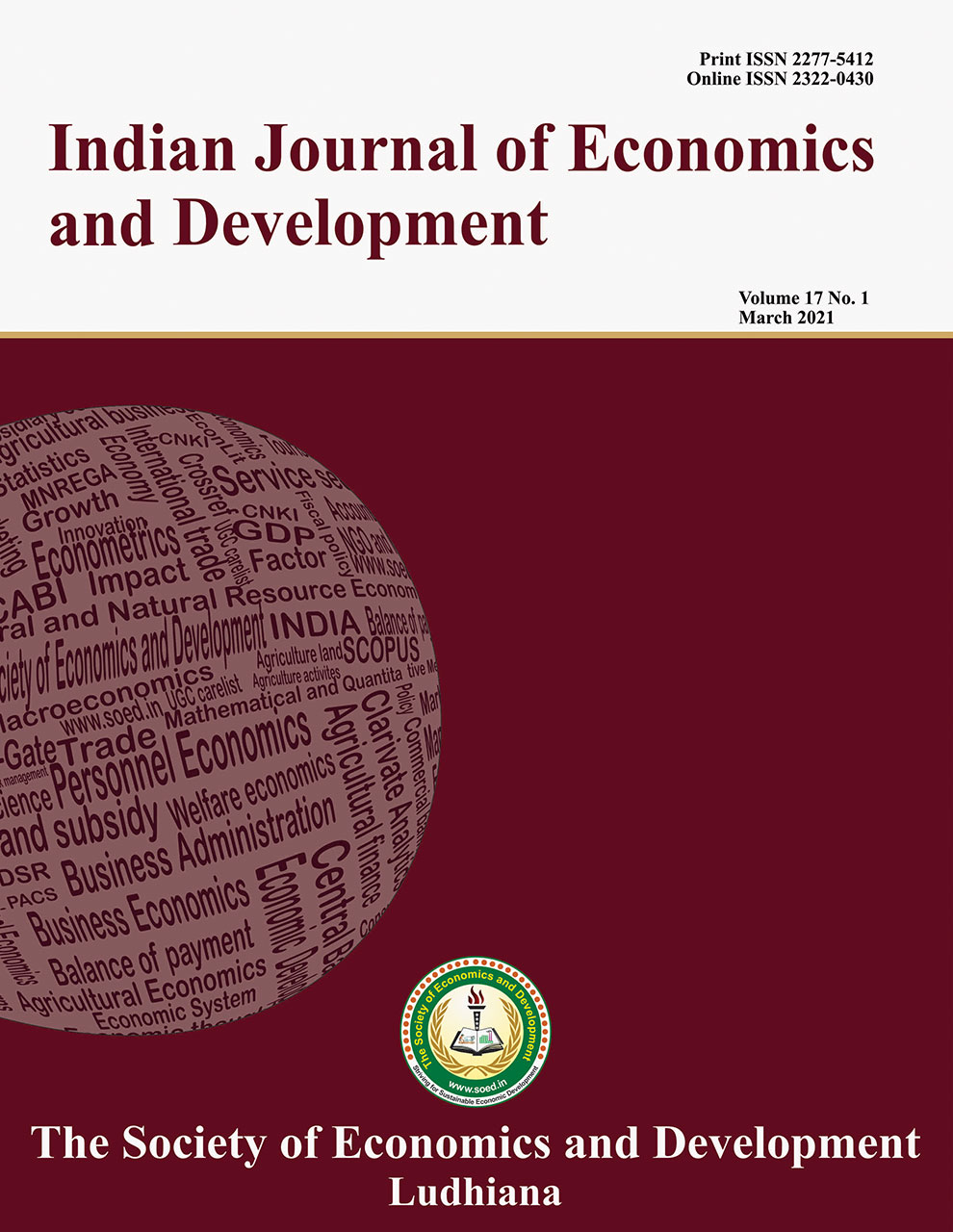An Epitome of Organic Agriculture in North-Eastern India: A Way Forward for a Sustainable Future

Price: ₹ 1000
Author: Priyanka Lal1, B.S. Chandel1, Binita Kumari1, Tulika Kumari2 and Ritu Rathore1
Author Address: 1Dairy Economics, Statistics and Management Division, ICAR-NDRI, Karnal-132001 (Haryana) and 2Dr. Rajendra Prasad Central Agriculture University, Pusa, Samastipur-848125 (Bihar)
Keywords: Fertilizer, organic, subsidy.
JEL Codes: J24, L66, O13, Q49.
Abstract
Green revolution in India has brought noticeable transformation in Indian agriculture. When the country was deficit in food production there was immediate need for transformation. This transformation needed backup of change of technology and increased use of inputs. Since change of technology needs time, so there was high demand for modern agriculture techniques and also increased use of inputs. Subsequently, to make inputs available to large section of small and marginal farmers, subsidies were given on various inputs. The fertilizers played an important role in increasing agricultural productivity. Since then the consumption of fertilizer increased for almost all the states. High use of fertilizer was followed by increased subsidy. There was over-utilization of resources. Many states resorted to high use of fertilizers since it was unsustainable and posed negative impact on the environment. Though rural economy is not totally developed in these sister states but these states have moved towards more sustainable kind of agriculture i.e. organic agriculture. There was sharp decline in growth rate of per ha fertilizer use during TE 1993-94 and TE 2005-06 for almost all the major states but highest decline was found for North-Eastern India in TE 2014-15. The results on decline in growth was supported by decline in amount of subsidy per ha and share of area treated with chemical and organic input was strikingly low as compared to other agriculturally progressed states. This paved a pathway for a sustainable future which needs to be adopted by rest of the country as well.
Description
Indian Journal of Economics and Development
Volume 16 No. SS, 2020, 492-495
DOI: https://doi.org/10.35716/ijed/NS20-009
Indexed in Clarivate Analytics (ESCI) of WoS
Priyanka Lal1, B.S. Chandel1, Binita Kumari1, Tulika Kumari2 and Ritu Rathore1
1Dairy Economics, Statistics and Management Division, ICAR-NDRI, Karnal-132001 (Haryana) and
2Dr. Rajendra Prasad Central Agriculture University, Pusa, Samastipur-848125 (Bihar)
Corresponding author’s e-mail: priyanka.lal6@gmail.com



